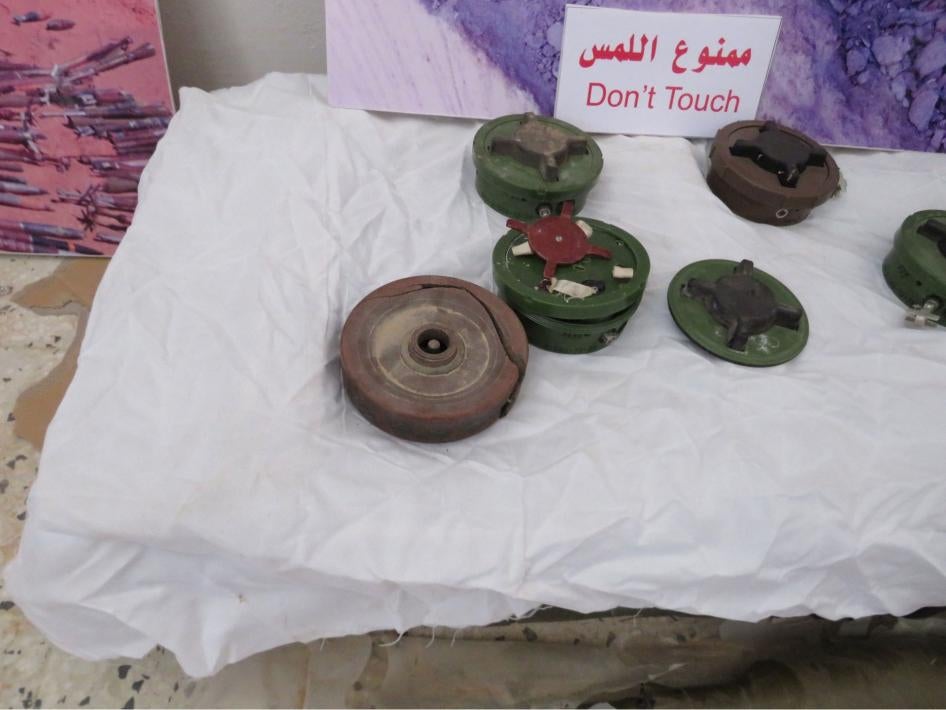Buried in a new report by the United Nations Panel of Experts on Libya comes disturbing news about recent transfers of internationally banned antipersonnel landmines. The report shows that antipersonnel mines manufactured in Russia were likely brought into Libya in the 2018-2019 despite an arms embargo.
Last year, Human Rights Watch reported the use of antipersonnel landmines and booby traps in southern suburbs of the Libyan capital, Tripoli, after Libyan Arab Armed Forces (LAAF), supported by several foreign states and armed entities withdrew from the city.
At the time, the internationally recognized Tripoli-based former Government of National Accord (GNA) shared photographs on Twitter showing Russian-made MON-50, POM-2, POM-2R, and PMN-2 antipersonnel landmines that it claimed were used by “mercenaries” supporting LAAF forces.
Several of the same types of antipersonnel mines have also been used in Ukraine and Syria, coinciding with Russian military presence in those conflicts.
Libya’s former government under Muammar Gaddafi acquired and stockpiled millions of landmines, which were abandoned or left unsecured when his government was toppled in 2011. But the types of antipersonnel mines described in UN and Human Rights Watch reporting were not seen in Libya before 2020.
Libya and Russia are not among the 164 nations that have committed to prohibit the use, production, transfer, and stockpiling of antipersonnel mines. Since the adoption of the 1997 Mine Ban Treaty, transfers of antipersonnel mines have dwindled to a low number of illicit transfers.
Antipersonnel mines of Soviet/Russian origin have been reported in more than 30 countries. But of the 37 countries that previously produced antipersonnel mines, there is no evidence to show any have transferred them since the treaty came into being. In the past few years, the only government forces to use antipersonnel mines were in Myanmar and North Korea.
Reduced transfers mean the stigma attached to antipersonnel mines is strengthening with time. But the appearance of Russian-made antipersonnel mines in recent conflicts raises alarm bells and shows that Russia may be deliberately flouting the emerging international norm against any transfers or use of these weapons, which have taken untold lives and limbs.









